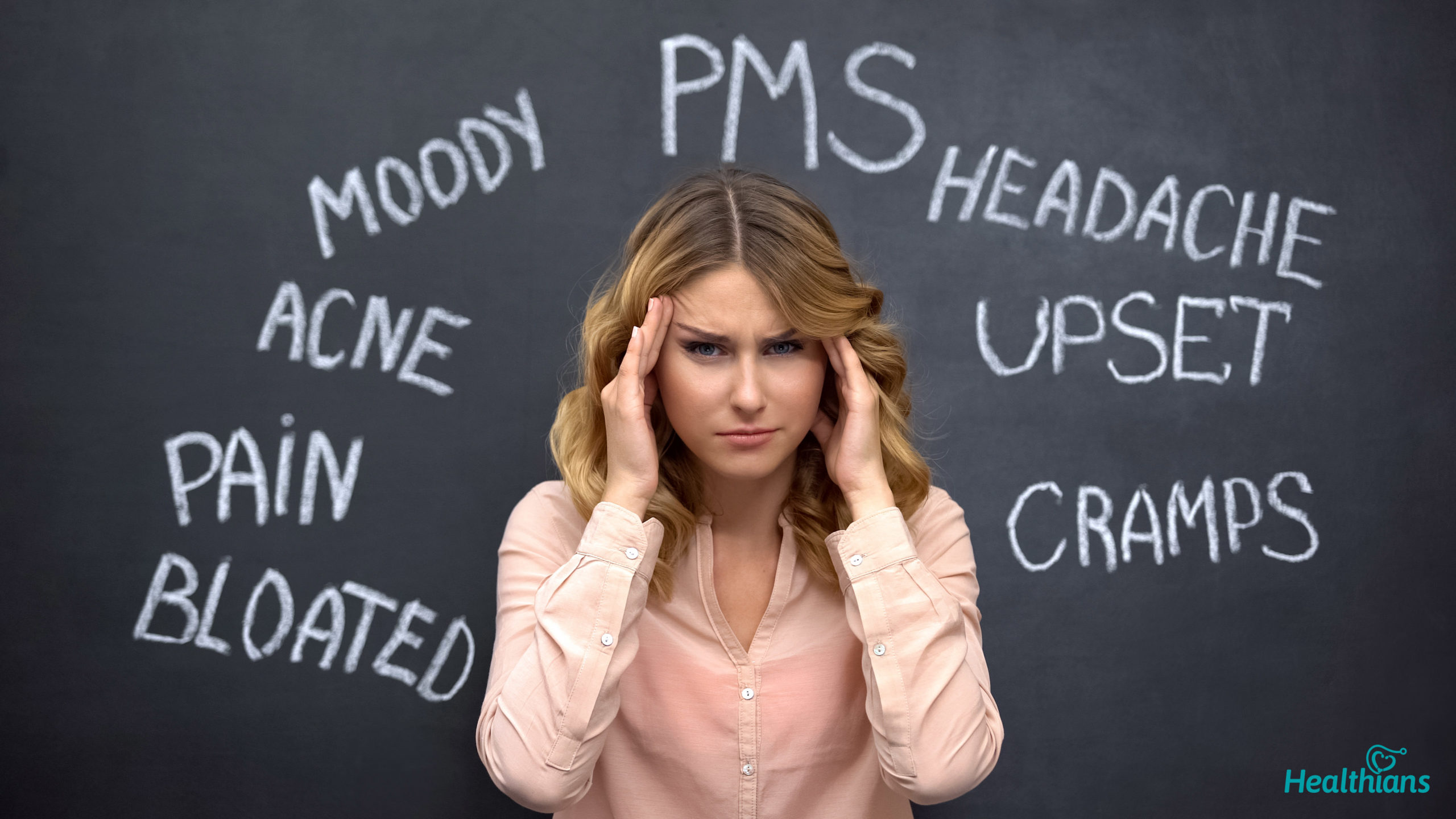Contributed by: Healthians Team
PMS is a set of physical and mental symptoms that many women experience after ovulation and before their period begins. PMS is thought to occur in the days following ovulation because estrogen and progesterone levels drop rapidly if you are not pregnant. PMS symptoms fade within a few days of a woman’s period beginning, as hormone levels rise again.
Myth #1: PMS only affects girls age 18 and younger
Fact:
The truth is that females of any age who are menstruating can experience PMS, PMS affects up to 75% of women during their reproductive years, however, only 20% to 40% of them have problems as a result. PMS symptoms can arise at any point between puberty and menopause, although it is most frequent among women in their late 20s to early 40s.
Myth #2: PMS symptoms are no big deal
Fact:
While many PMS symptoms are minor and may be managed with over-the-counter pain medicines, some are near-debilitating symptoms. For example, premenstrual dysphoric disorder (PMDD) is an extreme form of PMS in which the experience of premenstrual symptoms is so debilitating that it can lead to rage, sadness, hopelessness, and even suicidal thoughts. PMDD is considered a psychiatric diagnosis rather than a gynecological one, necessitating a doctor’s help to cope with the symptoms.
Myth #3: Exercising has no effect on the emotional symptoms of PMS
Fact:
PMS can make some women feel tired, which makes it difficult to exercise, but making an effort to stick to a regular workout regimen might help. Women who exercise on a daily basis have fewer mood-related symptoms and less severe physical symptoms of PMS. This is most likely due to endorphins, which are feel-good chemicals released by the body during exercise and stimulate positive emotions.
Myth #4: Toxic shock syndrome (TSS) is a sign and symptom of PMS
Fact:
Toxic shock syndrome (TSS) is an uncommon ailment that isn’t linked to PMS, but it can be caused by superabsorbent tampons left in the vaginal area for more than eight hours, which can promote the bacteria that causes TSS.
Myth #5: Any symptoms that occur before the period are directly related to PMS
Fact:
This is a popular misconception. In reality, simply because a woman has premenstrual symptoms does not indicate she has PMS. Premenstrual syndrome is a medical diagnosis that encompasses a wide range of symptoms, both emotional and physical. While some people may suffer mild to moderate premenstrual symptoms, if they don’t have a substantial negative impact on a person’s life, they aren’t considered premenstrual symptoms.
PMS is not a one-size-fits-all experience; rather, each woman’s PMS symptoms are unique. It’s possible that your symptoms will alter over time.
PMS can cause physical symptoms such as:
-
- Swollen or painful breasts
- Diarrhea or constipation
- Cramping or bloating
- Headache or a backache
- Sensitivity to noise and light
Emotional or mental symptoms of PMS may include:
-
- Irritability or hostile behavior
- Tiredness and fatigue
- Sleeping disorders
- Changes in appetite
- Food cravings
- Trouble concentrating
- Anxiety and depression
- Feelings of sadness
- Mood swings
- Less interest in sex
How to know you have PMS
The basic steps are as follows:
Track your premenstrual timeline: Count back 14 days to the start of each period. The time between ovulation and the start of your period is generally the luteal phase.
Patterns to look for: Do you have any symptoms during the premenstrual period on a regular basis? Or are they spread out over the course of your cycle? Record each positive and negative symptom as you experience it. Make a note of how you feel both emotionally and physically each day.
Examine the severity: Are any of your symptoms severe enough to have an influence on your life? A moderate/severe case of PMS may be indicated by missing work or school.
Identify variations: Keep track of multiple (not just one) menstrual cycles. This will aid in capturing variation from cycle to cycle.
Wrapping up
If you’re worried about how PMS is affecting you, talk to your healthcare practitioner to help you plan ahead to mitigate uncomfortable symptoms, and identifying triggers that exacerbate symptoms. Having all of this vital information can assist your healthcare provider give an accurate medical diagnosis of your premenstrual symptoms.




